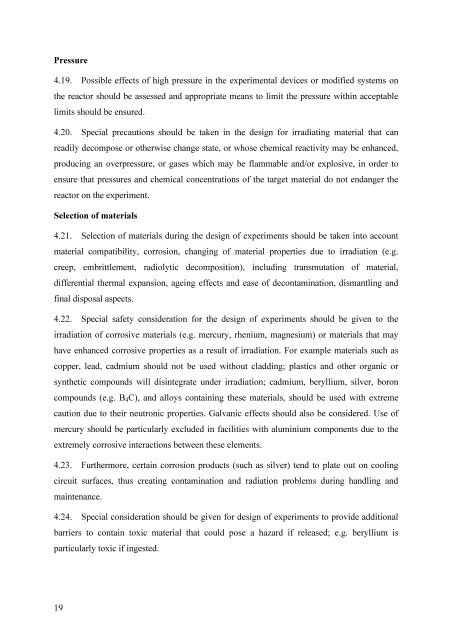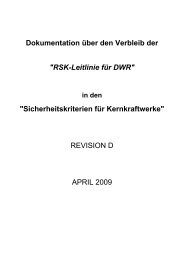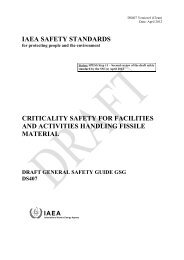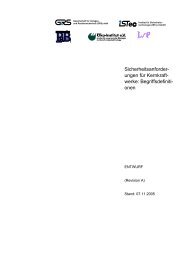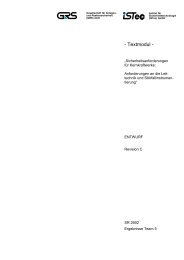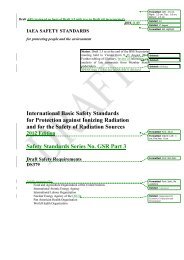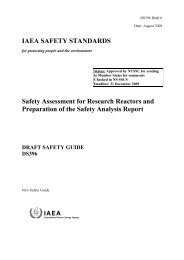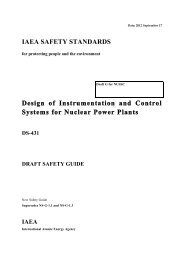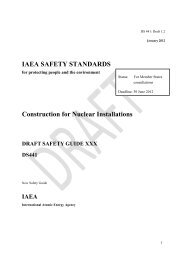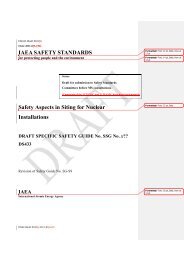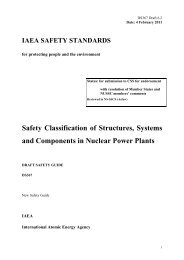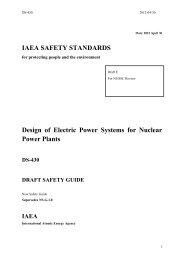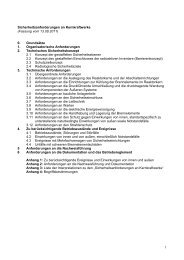DS397 Saf Use Mod RRs with NUSSC comments 18-06-2010
DS397 Saf Use Mod RRs with NUSSC comments 18-06-2010
DS397 Saf Use Mod RRs with NUSSC comments 18-06-2010
You also want an ePaper? Increase the reach of your titles
YUMPU automatically turns print PDFs into web optimized ePapers that Google loves.
Pressure4.19. Possible effects of high pressure in the experimental devices or modified systems onthe reactor should be assessed and appropriate means to limit the pressure <strong>with</strong>in acceptablelimits should be ensured.4.20. Special precautions should be taken in the design for irradiating material that canreadily decompose or otherwise change state, or whose chemical reactivity may be enhanced,producing an overpressure, or gases which may be flammable and/or explosive, in order toensure that pressures and chemical concentrations of the target material do not endanger thereactor on the experiment.Selection of materials4.21. Selection of materials during the design of experiments should be taken into accountmaterial compatibility, corrosion, changing of material properties due to irradiation (e.g.creep, embrittlement, radiolytic decomposition), including transmutation of material,differential thermal expansion, ageing effects and ease of decontamination, dismantling andfinal disposal aspects.4.22. Special safety consideration for the design of experiments should be given to theirradiation of corrosive materials (e.g. mercury, rhenium, magnesium) or materials that mayhave enhanced corrosive properties as a result of irradiation. For example materials such ascopper, lead, cadmium should not be used <strong>with</strong>out cladding; plastics and other organic orsynthetic compounds will disintegrate under irradiation; cadmium, beryllium, silver, boroncompounds (e.g. B 4 C), and alloys containing these materials, should be used <strong>with</strong> extremecaution due to their neutronic properties. Galvanic effects should also be considered. <strong>Use</strong> ofmercury should be particularly excluded in facilities <strong>with</strong> aluminium components due to theextremely corrosive interactions between these elements.4.23. Furthermore, certain corrosion products (such as silver) tend to plate out on coolingcircuit surfaces, thus creating contamination and radiation problems during handling andmaintenance.4.24. Special consideration should be given for design of experiments to provide additionalbarriers to contain toxic material that could pose a hazard if released; e.g. beryllium isparticularly toxic if ingested.19


